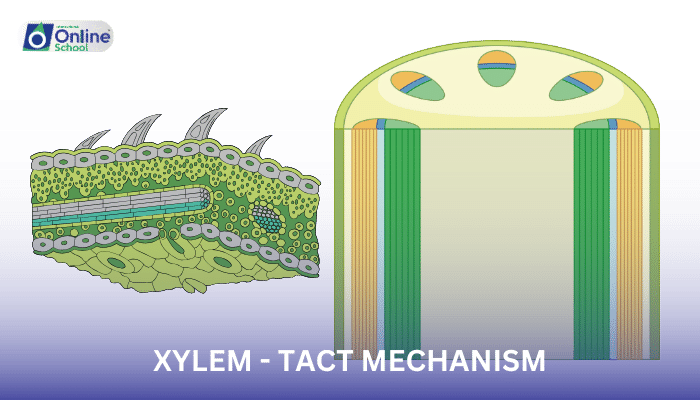
Learning Outcomes:
i. Define transpiration and explain its role in water movement in plants.
ii. Describe the concept of cohesion and adhesion in water molecules and their significance in plant physiology.
iii. Explain the TACT (Transpiration, Adhesion, Cohesion, and Tension) mechanism for water movement in xylem.
iv. Discuss the role of xylem vessels in providing a continuous pathway for water transport.
v. Analyze the factors influencing the rate of water movement in xylem, including transpiration rate, xylem vessel diameter, and path length.
i. Transpiration: The Driving Force
Transpiration is the process by which plants lose water vapor through tiny pores called stomata, primarily located on the underside of leaves. This continuous loss of water creates a negative pressure, or tension, in the xylem, the specialized transport system responsible for transporting water from the roots to the leaves.
ii. Cohesion and Adhesion: The Molecular Glue
Cohesion is the attractive force between water molecules due to hydrogen bonding. Water molecules have a slight bend or dipole moment, resulting in a partial positive charge on one end and a partial negative charge on the other end. These opposite charges attract each other, causing water molecules to stick together.
Adhesion is the attractive force between water molecules and other surfaces, such as the walls of xylem vessels. Water molecules have a polar structure, making them attracted to polar surfaces. In xylem vessels, water molecules adhere to the hydrophilic walls of the vessels, creating a continuous water column.
iii. TACT: A Mechanism of Water Transport
The TACT mechanism for water movement in xylem combines the processes of transpiration, cohesion, adhesion, and tension.
Transpiration: Transpiration creates a negative pressure in the xylem, pulling water molecules from the roots upward.
Cohesion: Water molecules are attracted to each other through hydrogen bonding, forming a continuous chain of water molecules.
Adhesion: Water molecules adhere to the walls of xylem vessels, preventing them from breaking the chain.
Tension: The negative pressure created by transpiration is transmitted through the continuous chain of water molecules, pulling them upward.
iv. Role of Xylem Vessels
Xylem vessels are elongated, tubular cells with thickened walls that provide a continuous pathway for water transport. Their large diameter reduces resistance to water flow, allowing for rapid water transport.
v. Factors Influencing Water Movement Rate
The rate of water movement in xylem depends on several factors:
Transpiration rate: The higher the transpiration rate, the greater the negative pressure in the xylem and the faster the movement of water.
Xylem vessel diameter: Wider xylem vessels reduce resistance to water flow, allowing for faster water transport.
Path length: The longer the path water must travel, the slower the rate of water movement.
The TACT mechanism, driven by transpiration, cohesion, adhesion, and tension, allows plants to efficiently transport water from the roots to the leaves, supporting essential life processes such as photosynthesis. Understanding this mechanism provides insights into plant physiology, ecology, and agriculture.